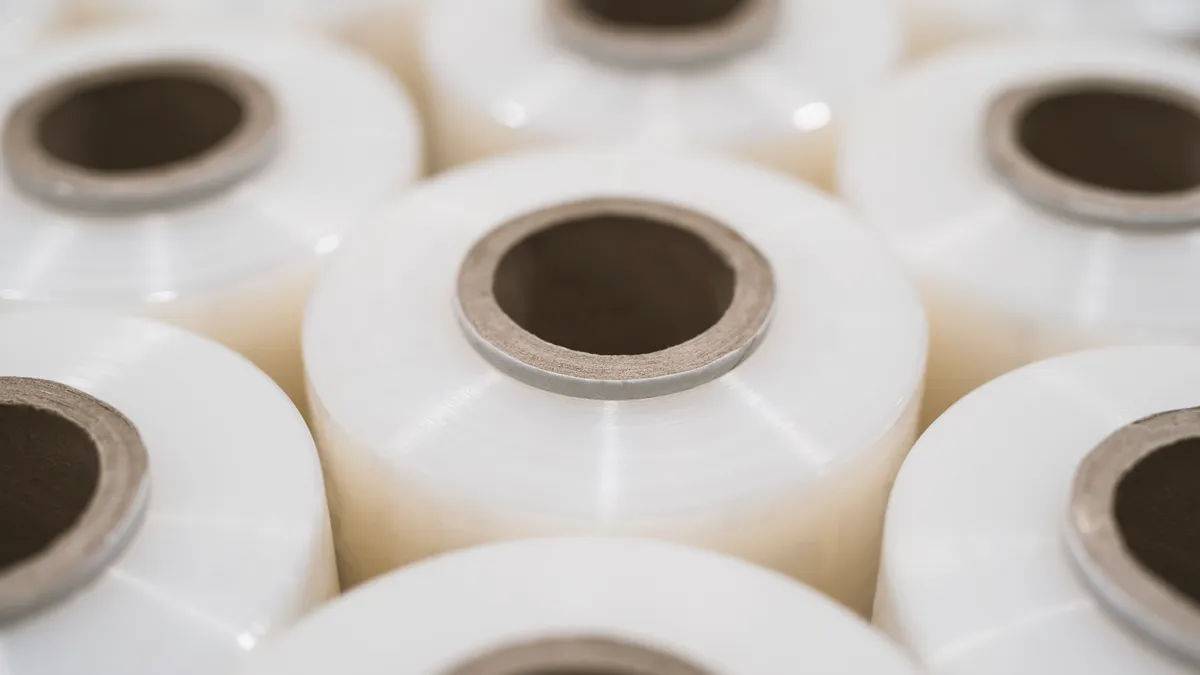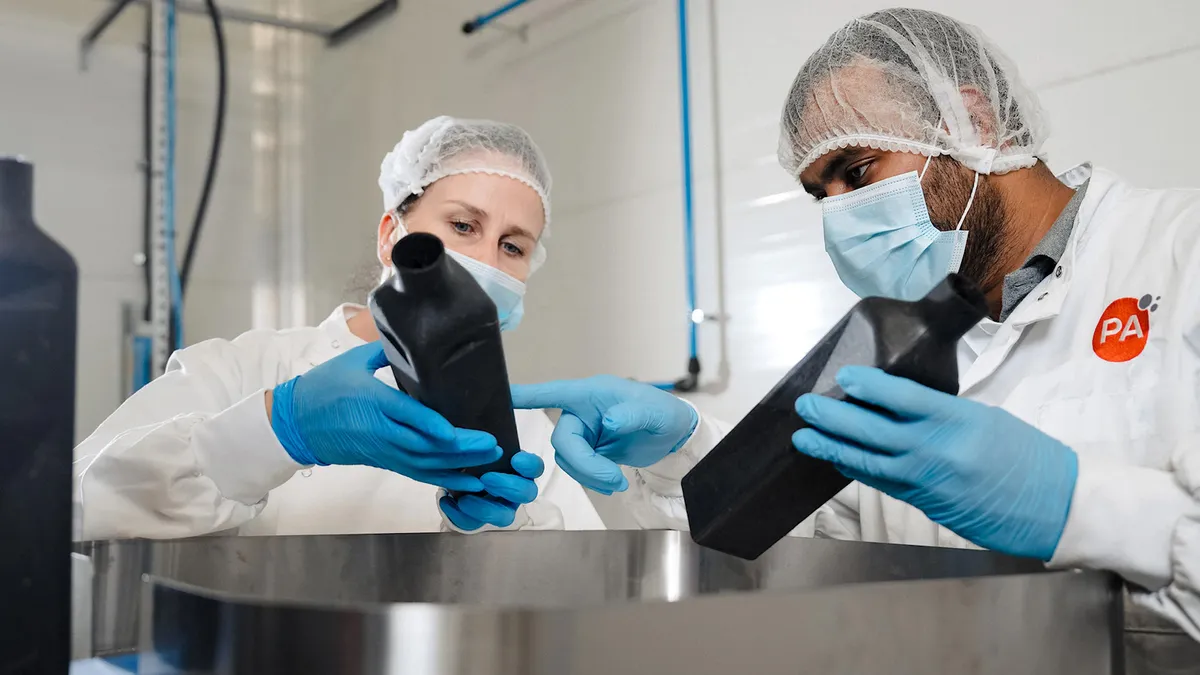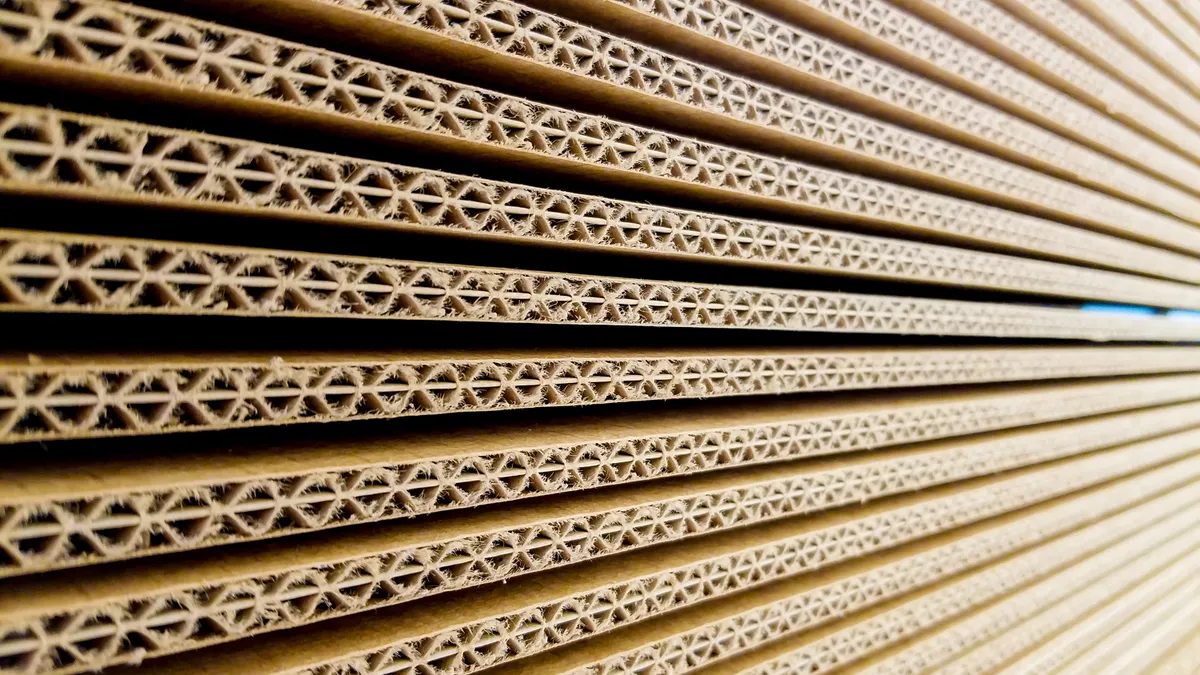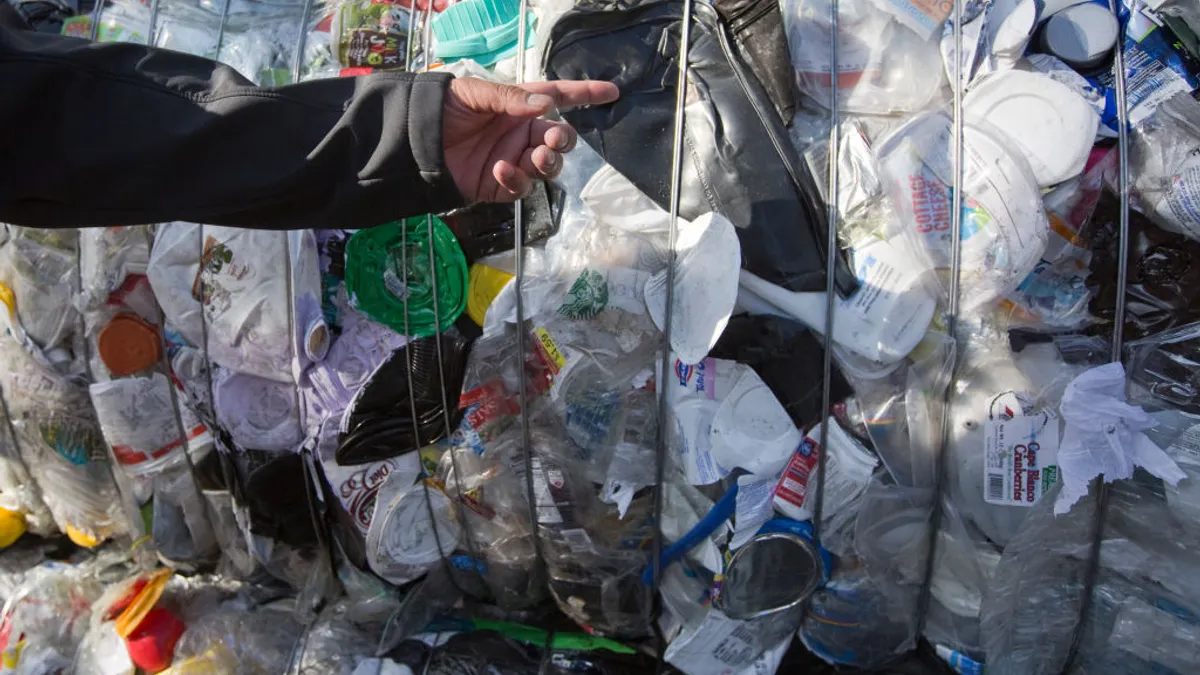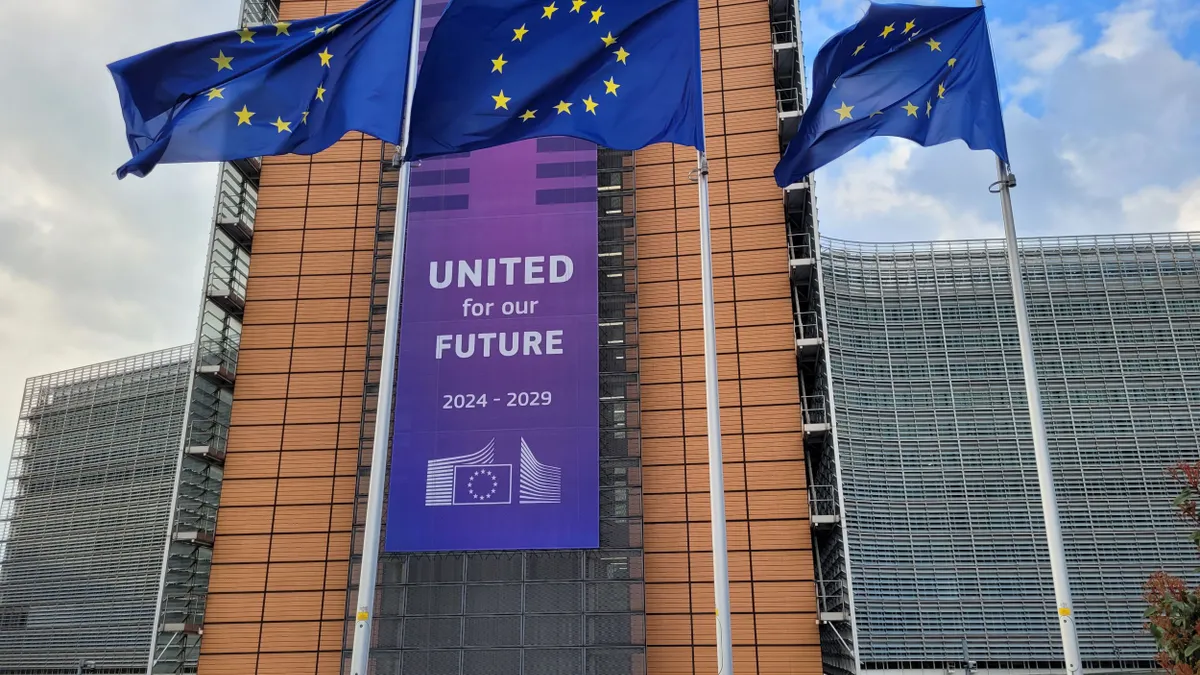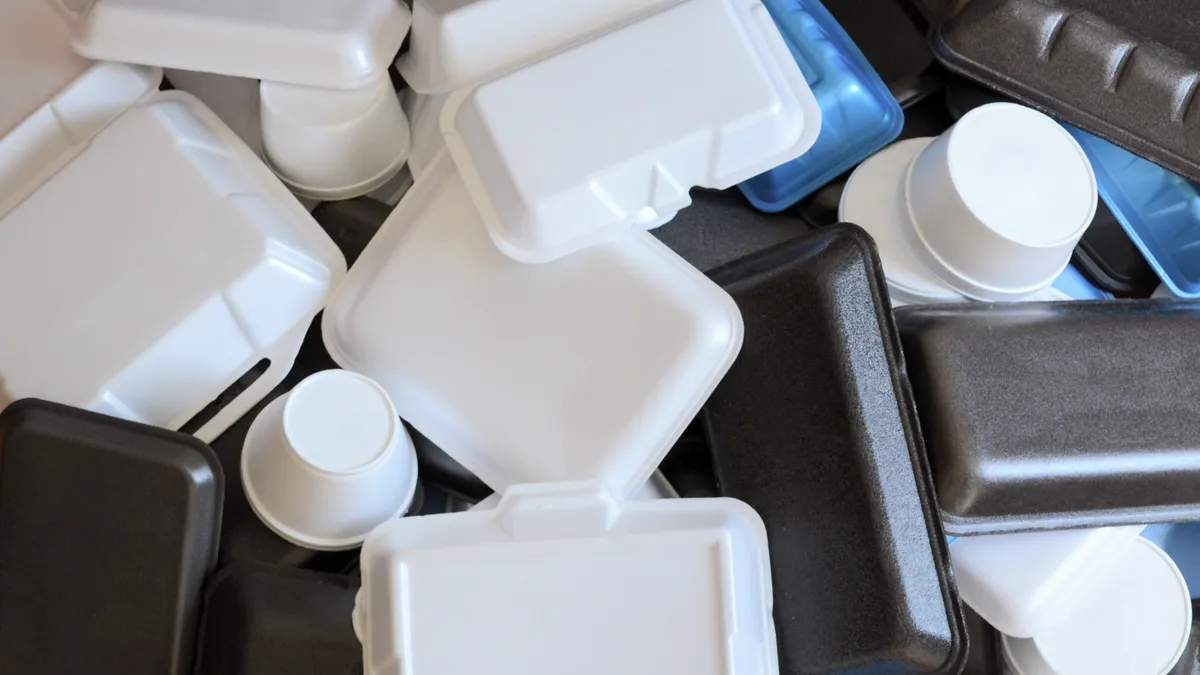Vinyl chloride has made a preliminary list of chemicals the U.S. EPA may review in the next few years — the first step the agency must take if it were to impose a ban. But some people in the materials industry warn that there are few alternatives available to replace many PVC products.
Vinyl chloride, first synthesized in 1835, is a monomer that is plasticized into the polymer polyvinyl chloride using phthalates. It comes in two forms, rigid — the type used in water pipes — and flexible, used in everything from cling wrap to toys to tents. About 44.3 million tons of PVC were produced in 2018, according to Statista, and production could rise to 59.7 million tons by 2025. This makes PVC one of the world’s most widely produced synthetic plastic polymers.
While demand is highest for PVC pipes and flooring, “packaging is a significant piece of the PVC market,” said Kevin Ott, executive director of the Flexible Vinyl Alliance. PVC’s packaging uses include pharmaceutical blisters, bottle sleeving, shrink wrap, food trays and packaging for disposable syringes.
In an email to Packaging Dive, EPA confirmed that it has included vinyl chloride on a preliminary list of 15 chemicals the agency is considering for a new risk evaluation under the Toxic Substances Control Act. EPA will decide on a final group of five compounds by the end of the year, a spokesperson said. The reviews, which would determine whether the chemicals pose a “reasonable risk to human health and the environment” under TSCA’s criteria, would take about three years to complete.
So far, industry groups are striking a positive tone. Ned Monroe, CEO of the Vinyl Institute, said that “we welcome the process as an opportunity to correct misunderstanding about the regulation of vinyl chloride manufacturing and the safety of PVC products,” adding that “manufacturers of vinyl chloride adhere to some of the most stringent safety and environmental regulations in the chemical industry.”
Train derailment renews attention on health risks
After this year’s derailment of a train carrying vinyl chloride in East Palestine, Ohio, which sent large plumes of black smoke into the air, advocacy groups petitioned EPA to launch a new risk assessment of the chemical — the first step to a ban.
However, not all reviews lead to further regulation. In January, EPA denied a 2014 petition from the Center for Biological Diversity seeking a designation of PVC as hazardous waste, saying that the evidence supplied in the petition did not support such a listing.
While PVC itself is not a known or suspected carcinogen, the vinyl chloride used to make it is. The EPA designated vinyl chloride as a human carcinogen in 1975. Studies have linked the flammable, colorless gas to liver, brain and lung cancers as well as some blood cancers including lymphoma and leukemia. It can also damage the immune and reproductive systems.
People most vulnerable to prolonged exposure to vinyl chloride include workers and residents near manufacturing facilities, who may breathe in the chemical for years. The chemical has been detected in the air near manufacturing facilities, hazardous waste sites and landfills, according to the Agency for Toxic Substances and Disease Registry.
Phthalates, plasticizers used to make flexible PVC (including in some packaging) have also been linked to health risks, including disrupting the endocrine system. In July, the Food and Drug Administration declined to reconsider a petition to ban multiple ortho-phthalates.
After several environmental groups delivered 27,570 petition signatures to the EPA in July, the agency said it would consider including vinyl chloride as part of a larger effort to conduct new risk assessments for a half-dozen chemicals, with those used in plastics given priority.
“With the situation in East Palestine, we are all laser-focused on this chemical,” said Cynthia Palmer, a senior petrochemical analyst for Moms Clean Air Force, one of the groups that petitioned EPA and met with agency officials over the spring and summer. “We look at the cradle-to-grave supply chain, and unfortunately the results of such an analysis paints a portrait of the chemical that stands out from others.”
Industry groups say a new assessment will show that PVC is safe. According to the Flexible Vinyl Alliance, the industry has “dramatically improved” the way PVC is produced since its origination approximately 50 years ago. For example, FVA says emissions have been “substantially reduced” to help protect workers and communities near manufacturing facilities. It also says programs to potentially recycle PVC medical materials are in development.
“For PVC packaging, the performance is exceptional, and the safety is also exceptional,” said Ott.
Hard to replace
If EPA were to restrict or ban the chemical, several sources said the industry would be hard pressed to find a replacement for PVC. The very attributes that make the material so attractive for such a wide variety of uses — its durability, strength, light weight and insulating properties — make it difficult to match in the lab.
Eric Beckman, a chemical engineer based at the University of Pittsburgh, said it’s not impossible. “I would guess that some polyolefin elastomers, or some polyurethanes, or some nylons would be able to replace ‘soft’ PVC,” Beckman said in an email.
Greenpeace, an environmental advocacy group, has suggested some substitutes for PVC in packaging such as glass, linoleum, ceramics and clay. Others have suggested metal or other types of plastics.
“There are alternatives, and new alternatives can be created,” Palmer said. “[But] right now we incentivize and subsidize PVC and other fossil fuel plastics. We don’t incentivize the alternatives, and we don’t have a way to scale them up.”
Beckman suggested that the PVC industry would be smart to take a proactive approach and ramp up R&D now. “What is interesting is that the top PVC producers are typically not also producers of these possible alternatives, so I would guess that EPA scrutiny will get a lot of pushback from PVC producers while other companies waiting in the wings may be secretly applauding,” he wrote.
Another option may be to find new ways to make PVC. Beckman said it’s possible that PVC could still be made without vinyl chloride, but “no one has really looked at other ways to make PVC” since it has been done the same way for decades.
In the meantime, recycling PVC is not considered a viable solution because most recyclers will not accept the material. While the sector awaits more clarity from regulators, Beckman suggested looking at alternatives now to get ahead of any potential changes. In his view, “vinyl chloride is toxic and dangerous, so it's no surprise that EPA is looking at it.”
Moms Clean Air Force is optimistic that EPA will re-evaluate vinyl chloride. “There are safer alternatives. So it's an obvious decision,” said Palmer. Her organization and others hope a ban will follow.
But Ott of the Flexible Vinyl Alliance is doubtful that vinyl chloride will make it onto the agency’s final list for review. “I think it's a long shot,” he said. “I hope it's done because of science, not politics.”


